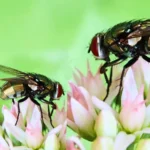Key Points
- A new class of shapes called “soft cells” is characterized by rounded corners. Natural forms like nautilus shells and plant seeds inspire it.
- The discovery highlights nature’s preference for avoiding corners to reduce energy loss and structural weakness.
- Architects like Zaha Hadid have intuitively used soft cells in design for structural and aesthetic purposes.
- The research connects ancient geometry with modern architectural and natural phenomena.
Mathematicians have identified a new class of shapes, termed “soft cells,” that resemble the forms seen in natural structures, such as the chambers of nautilus shells and the way seeds are packed in plants. This groundbreaking work, published recently, explores a fresh approach to tessellation—how shapes fit together on surfaces—by incorporating shapes with rounded corners.
Historically, mathematicians have known that only certain polygons, like squares or hexagons, can perfectly tile a 2D plane without gaps. However, introducing “soft cells” changes this notion by rounding some of the corners of traditional polygons, leading to new possibilities in space-filling tilings. These rounded or deformed corners, resembling teardrop-like shapes, create cusp-shaped edges that can fill 2D space efficiently.
The study, led by mathematician Gábor Domokos from the Budapest University of Technology and Economics, uses an algorithm to convert geometric shapes into soft cells. While the concept works in both 2D and 3D, the 3D version of these soft cells reveals remarkable potential. These shapes can fill volumetric spaces without sharp corners, and as they soften further, they form flange-like wings that resemble circular discs. Domokos believes these soft shapes are critical in natural systems for reducing deformation energy and improving structural integrity.
The discovery has applications beyond mathematics. Domokos and his colleagues identified similar soft shapes in nature, such as the concentric layers of onions, cells in tissue, and the 3D compartments of nautilus shells. The shapes are thought to avoid corners to minimize energy loss and structural weakness, principles that nature seems to optimize.
The study also points to the intuitive use of these forms in architecture, notably by renowned architect Zaha Hadid, who incorporated these shapes into her designs for aesthetic and structural reasons. The research team, which includes Alain Goriely of the University of Oxford, collaborated with architects in San Francisco to design award-winning structures based on soft-cell elements.
Despite being rooted in ancient geometric principles, the concept of soft cells introduces a new descriptive language for understanding natural forms. Domokos hopes this work will eventually inspire deeper insights into physical processes in nature, such as sediment flow in rivers or the formation of biological tissues.












